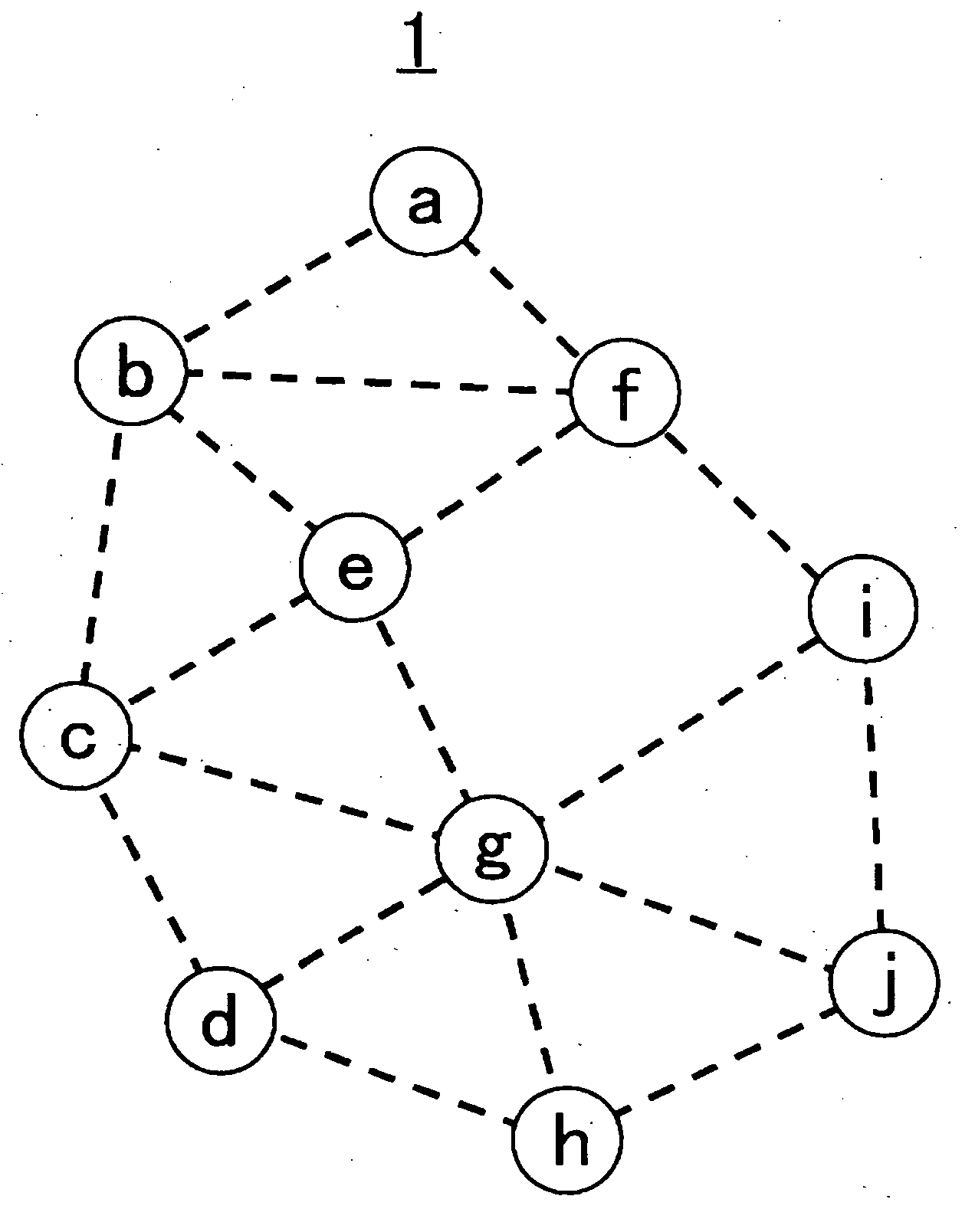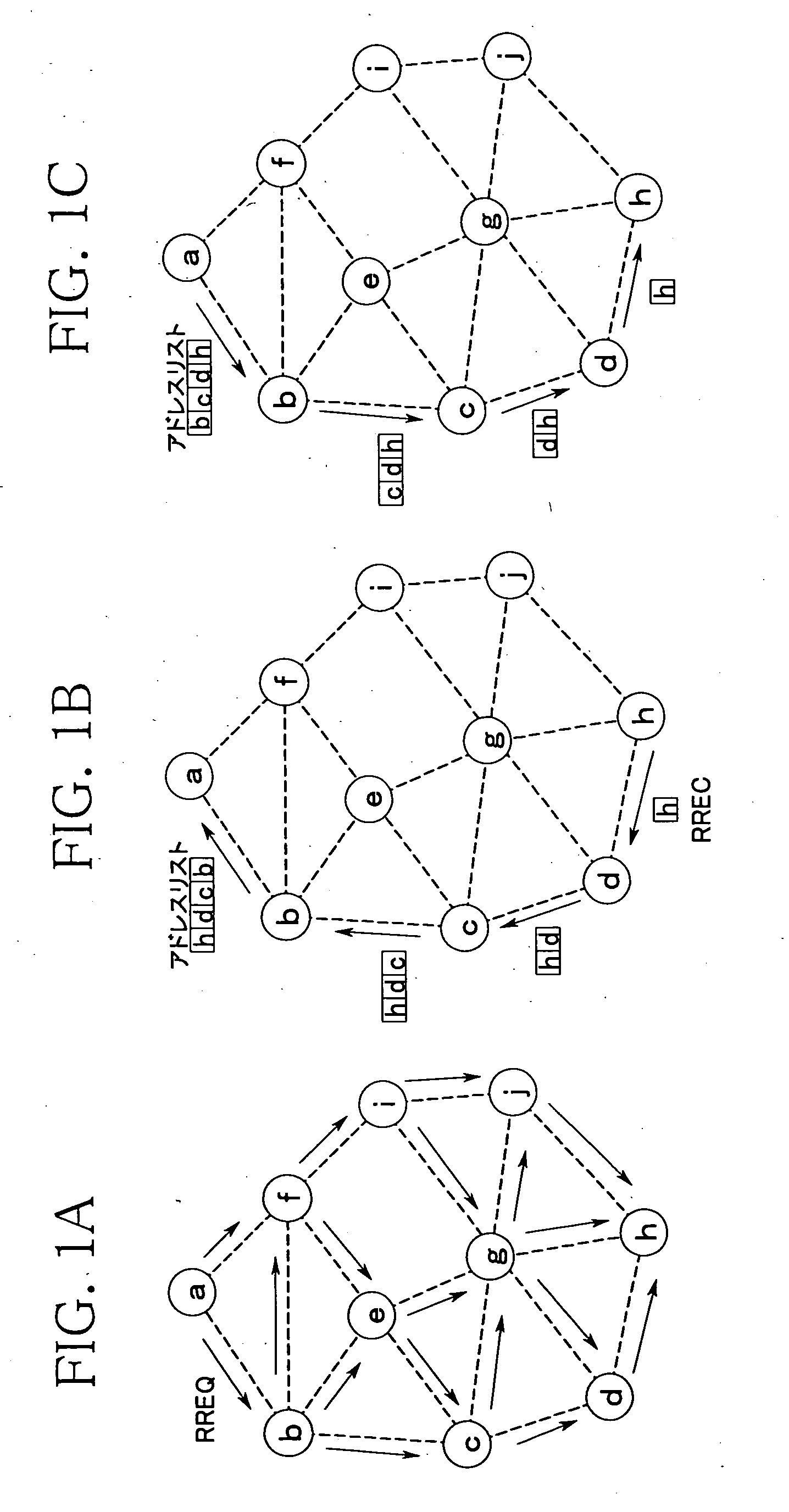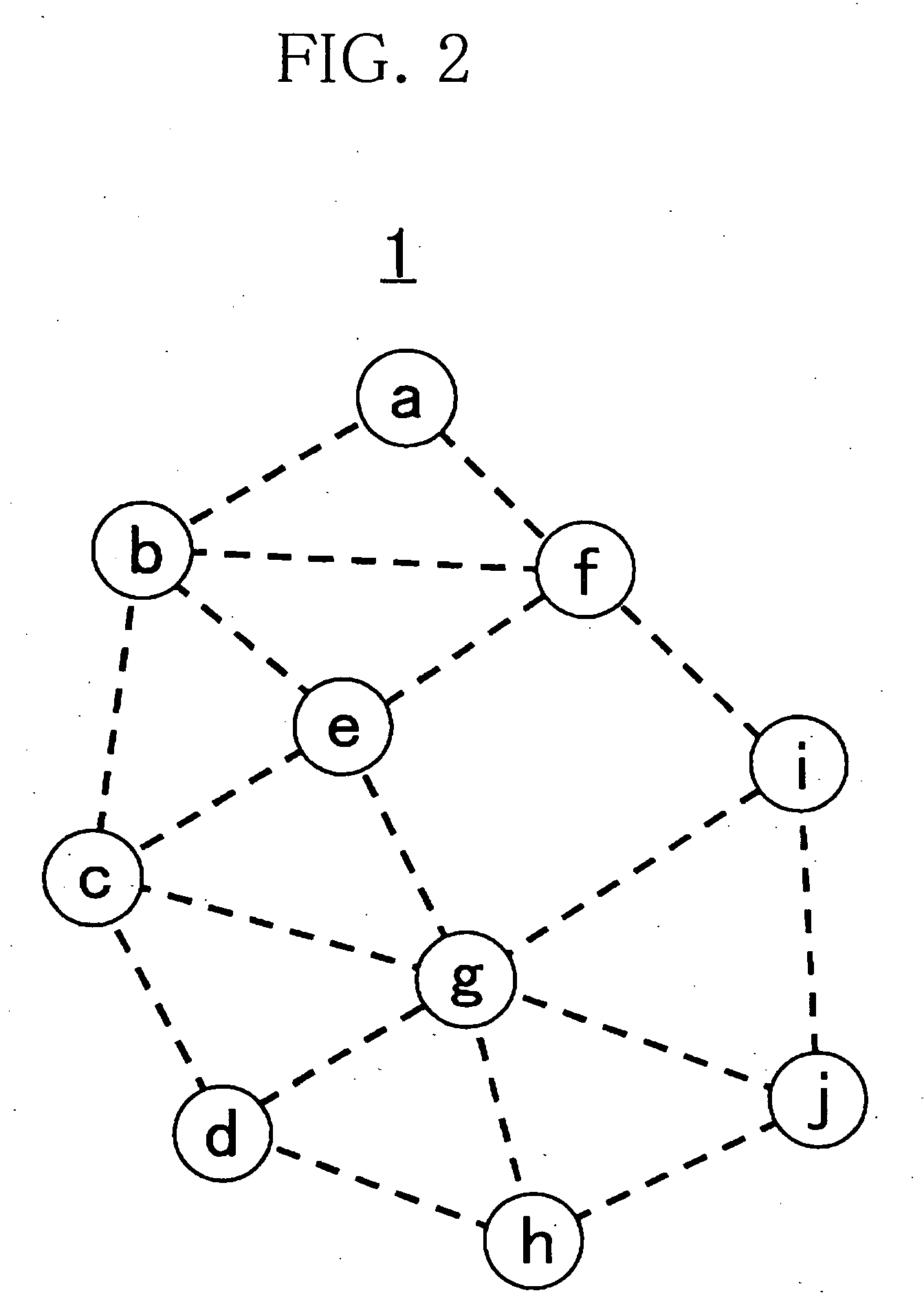Packet relay system and wireless node
a relay system and packet technology, applied in the field of packet relay systems, can solve the problems of difficult to calculate the correct link cost, temporary link disconnection, and insufficient link cost calculation method of routing according to the conventional many to one scheme, so as to achieve the appropriate link cost, quickly transmit packets to the destination node, and avoid increasing the amount of information communicated in the network
- Summary
- Abstract
- Description
- Claims
- Application Information
AI Technical Summary
Benefits of technology
Problems solved by technology
Method used
Image
Examples
first embodiment
[0049]FIG. 2 is a schematic diagram illustrating a packet relay system 1 according to this embodiment. The packet relay system 1 is, for example, a wireless sensor network and includes a node a which is a sink node and nodes b to j which are sensor nodes. Each of the nodes a to j can exchange a packet with an adjacent node through wireless communication. Nodes that are connected by dotted lines in FIG. 2 can exchange packets with each other. For example, the node a can exchange packets with the nodes b and f. In the packet relay system 1, for example, sensor data generated at each of the nodes b to j is aggregated at the node a.
[0050]FIG. 3 is a block diagram illustrating a configuration of the node b according to this embodiment. Each of the nodes a and c to j has the same configuration as that of the node b.
[0051]The node b includes an antenna 101, an amplifier 102, a wireless signal transmitting and receiving unit 103, a packet receiving unit 104, a relay processing unit 105, a r...
second embodiment
[0100]FIG. 12 is a block diagram illustrating a configuration of the node b according to the second embodiment. Each of the nodes a and c to j has the same configuration as that of the node b. The node b includes a packet aggregation unit 110 in addition to the components of the node b of the first embodiment.
[0101]When it is determined that the relay processing unit 105 has received an RREC packet from one of the adjacent nodes, the packet aggregation unit 110 holds the packet until a predetermined transmission time is reached and, when it is determined that the relay processing unit 105 has received an RREC packet from an adjacent node other than the one adjacent node before the predetermined transmission time is reached, the packet aggregation unit 110 generates a new RREC packet (hereinafter referred to as an “aggregate packet”) which aggregates addresses of these RREC packets and causes the packet transmitting unit 109 to relay the aggregate packet to a relay destination adjace...
third embodiment
[0121]FIG. 16 is a block diagram illustrating a configuration of the node c according to the third embodiment. Each of the nodes a, b, and d to j has the same configuration as that of the node c. The node c includes a 2-hop adjacent node table 111 in addition to the components of the node b of the first embodiment.
[0122]FIG. 17A illustrates an example of the routing table 106 of the node c. FIG. 17B illustrates an example of the 2-hop adjacent node table 111 of the node c. The node c not only includes the same routing table 106 as that of the first embodiment but also includes the 2-hop adjacent node table 111. An address of each first hop node and an address of each second hop node are stored in the 2-hop adjacent node table 111. Here, the first hop node is a node that is adjacent to the node c and the second hop node is a node that is adjacent to the first hop node and is not adjacent to the node c. For example, the nodes b, e, d, and g are first hop nodes of the node c and the no...
PUM
 Login to View More
Login to View More Abstract
Description
Claims
Application Information
 Login to View More
Login to View More - R&D
- Intellectual Property
- Life Sciences
- Materials
- Tech Scout
- Unparalleled Data Quality
- Higher Quality Content
- 60% Fewer Hallucinations
Browse by: Latest US Patents, China's latest patents, Technical Efficacy Thesaurus, Application Domain, Technology Topic, Popular Technical Reports.
© 2025 PatSnap. All rights reserved.Legal|Privacy policy|Modern Slavery Act Transparency Statement|Sitemap|About US| Contact US: help@patsnap.com



